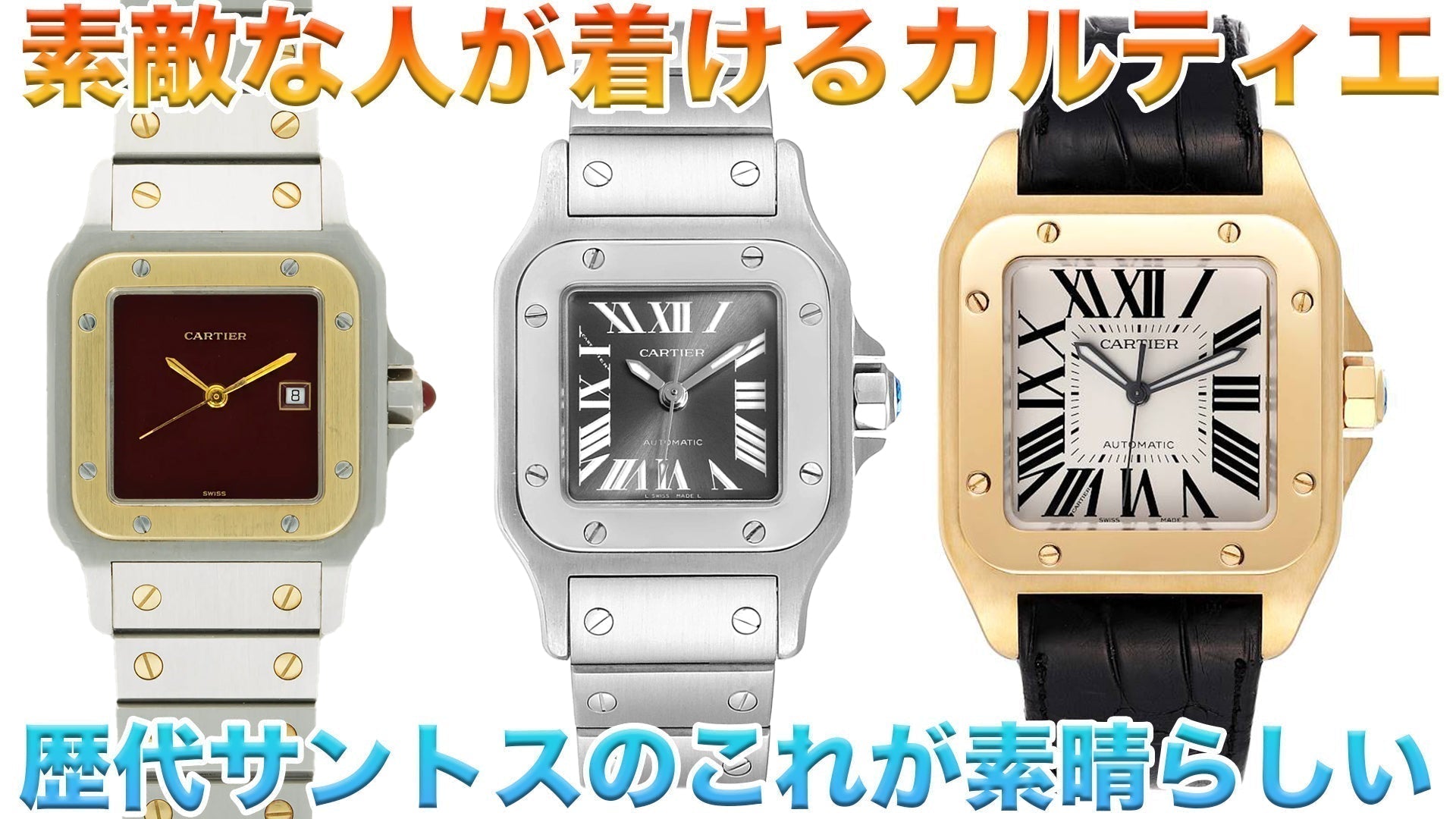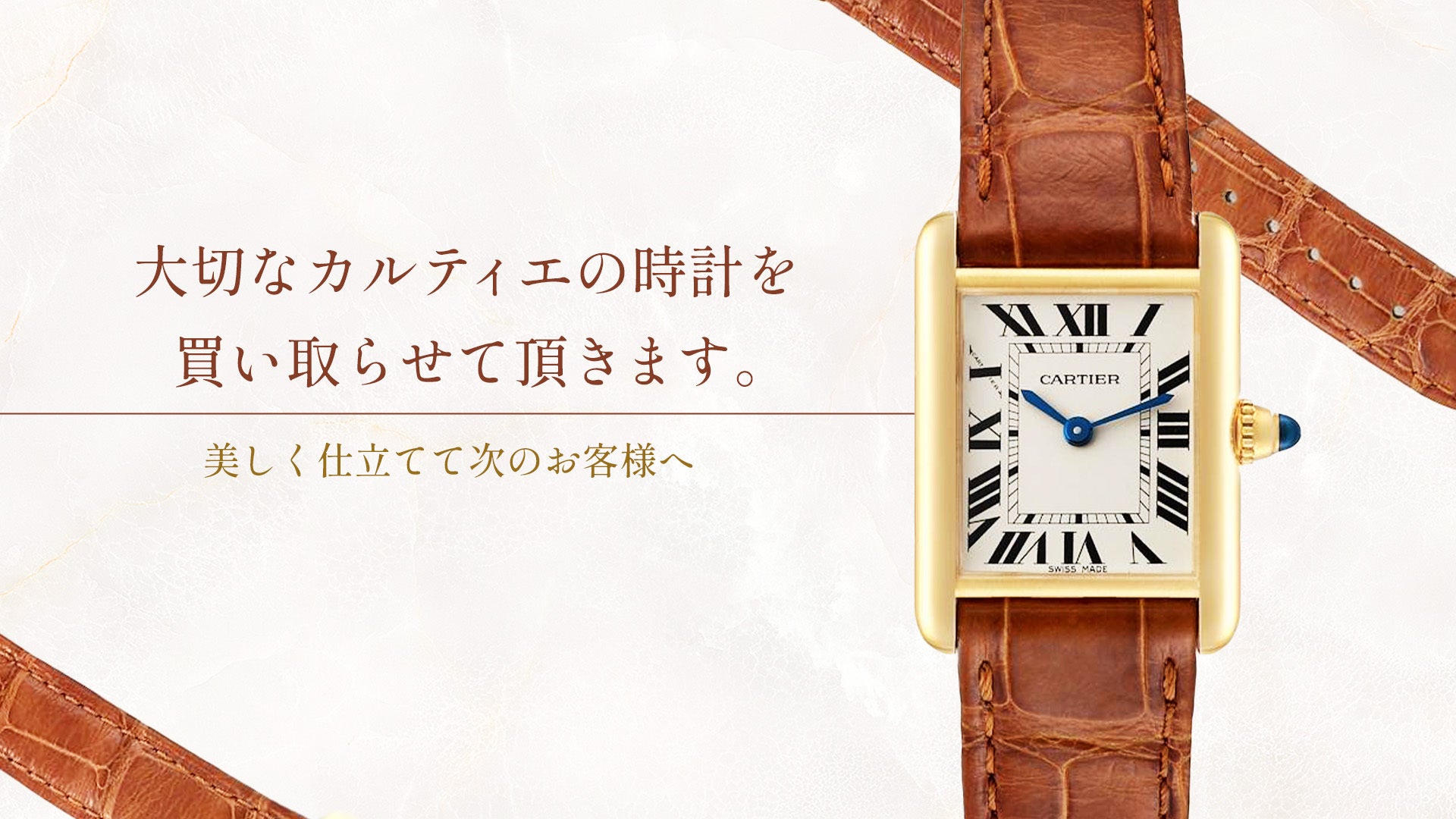Cartier Watch Santos 100 - Various Models
Click here to watch the video about Santos 100.
In this article, we will explain the various models of the Santos 100, a huge watch that is rare even among Cartier's watches, which are known for their simple design.
This article is 80% aimed at men and 20% aimed at women who like fashionable, thick watches.
By reading this article to the end, you will understand the appeal of Santos 100 and also deepen your knowledge about the materials and types of Santos 100, so please read to the end.
The Birth of Santos-Dumont
Since this story ties in with the Santos 100, I will briefly touch on the birth of Santos-Dumont. The president at the time, Louis Cartier III, received a request from a man named Alberto Santos-Dumont, who he had become friends with at a social gathering.
The request was for a watch that would allow a pilot to tell the time without taking his hands off the plane's controls.
The Santos was born in 1904 and was named after his friend, Santos-Dumont.
In 2004, the Santos 100 was created to commemorate the 100th anniversary of the Santos brand.
The history of Santos is explained in detail in this video, so if you are interested, please watch this video as well.
So why did a watch so huge that it was hard to believe it was a Cartier watch?
The background of the birth of Santos 100
The reason for this lies in the historical context.
From the late 1970s, there was a growing demand for larger watches.
It was around that time that Examples include the Audemars Piguet Royal Oak and the Patek Philippe Nautilus.
Then, in the 2000s, there was a demand for even larger, thicker watches.
At that time, rugged watches that were over 40mm thick, such as Panerai's Luminor and Hublot watches, were becoming popular.
However, Cartier did not have a comparable model at the time, so they enlarged the Santos and created the Santos 100.
What models are available for the Santos 100?
Now let's take a look at what models are available for the Santos 100.

The Santos was available in MM and LM models as a three-hand watch, and in XL as a chronograph.
MM is 33mm, which can be worn by women too.
LM is 38mm for men.
XL is even larger at 41.5mm
It has become.



It's the Santos 100, but there are actually this many different types.
The basic line is stainless steel, 18K yellow, and pink gold, but there are special models, and although it is difficult to pinpoint the exact date, it seems that watches that use PVD, ADLC, rubber, etc. were unofficially released.
PVD is an abbreviation for "physical vapor deposition" and is also known as physical vapor deposition.
Simply put, it is a technology that uses ionized materials such as titanium to create a hard coating on the surface of a material, similar to gold plating.
ADLC stands for Amorphous Diamond-Like Carbon, and is a coating that has scratch and corrosion resistance close to that of diamond.
Both make the surface hard and the black color makes it look cool.
Rubber is a material that is resistant to scratches and impacts and is used in G-Shock watches.
The basic line is fitted with a leather strap, but the subsequent PVD, rubber and carbon models feature a rubber strap.
Now let's take a look at the movement that was installed in the Santos 100.

The movement is an automatic Cal.049 ( ETA 2892-A2 ).
At that time, Cartier was not yet able to make its own movements, so they purchased ETA movements and converted them for their own use.
Let me explain a little bit about movements here. Basically, there are only a handful of Swiss watch brands that are able to make their own movements in-house.
For example, Jaeger-LeCoultre is well-known, but other companies such as Lemania, Universal Geneve, and IWC were able to produce their watches in-house.
In reality, making a movement is extremely difficult, so much so that even Rolex, Heuer, and Breitling have used generic movements for a while.
In this way, the Santos 100 is also equipped with an ETA movement, but it is safe to say that roughly half of the Swiss watches made between the 1980s and the mid-2000s were equipped with ETA movements.
ETA is now part of the Swatch Group, but remains a dedicated company that only makes movements.
Now let's take a look at the chronograph models.

This model is even larger than the three-hand model, so it seems like this was intended to compete with Panerai and Hublot.
Since it is based on the Santos 100, even though it is a chronograph it feels sturdy and powerful.
Of course, the chronograph model also uses an ETA movement, the automatic Cal. 8630 MC (ETA 7753).
Returning to the three-hand model, there are special editions such as the black one I mentioned earlier, but there is actually an ultra-luxury model that goes even further than that, although it is not well known.
This is the palladium skeleton model, which was released in limited edition in 2009.

The size is significantly larger than the previous Santos 100, measuring 46.5mm x 54.9mm.
Palladium has similar material properties to platinum, but its specific gravity is lighter than platinum, so even though it is large, it does not feel as heavy.
Most notably, it is equipped with a Cartier caliber.
As mentioned above, Cartier has used movements from other companies in all of its watches except for the CPCP, but after the CPCP, Haute Horlogerie, and watches made in the Privé collection, they have been using movements made in-house.
Please take a look at this video for more information about CPCP and the Privee Collection.
That being said, you can still see the movement in the skeleton, and when you look at the indexes and each bridge, you can see that they have been carefully chamfered, making this a wonderful watch that allows you to feel the craftsmanship behind it.
The Santos was then redesigned in 2018, and production of the previous Santos 100 was discontinued in 2017, taking over from the new model.
summary
To sum up, I would say that a 38mm case diameter is average or slightly larger in terms of modern sizes.
However, the important point is that the Santos 100 is a watch designed and created by Cartier.
In the first place, in Cartier's history, it was rare for the brand to produce such a rugged model, and formal watches were indeed the image of Cartier.
Considering that Cartier created such a large watch and how it led to the current Santos de Cartier, I think the Santos 100 can be said to be the ancestor of large, thick watches.

